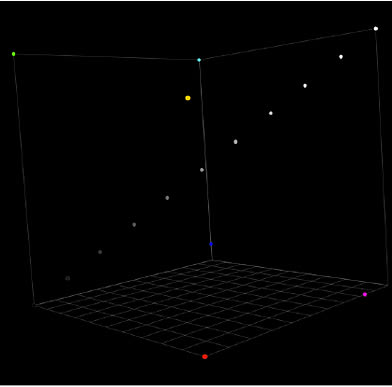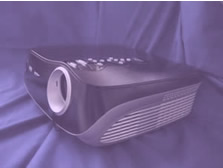Lumagen Radiance LUT based Calibration example
This is a short article to document the amazing colour accuracy that can be achieved with the use of a LUT based calibration and a Lumagen Radiance 2123 scaler.
One of the displays I have is a Panasonic S10 1080p plasma. This display has basic greyscale calibration capability and no CMS or selectable gamut. One of the side effects of having CMS and gamut controls in displays is that they are often not great and indeed using them can lead to errors in other parts of the colourspace that are not normally measured during the calibration process. This display just uses itís native colourspace though and although that colourspace is far from the HDTV standard of REC709, in fact that makes it a pretty good candidate for a LUT based calibration. This is because the errors within the colour cube are pretty linear.
Just to show what a big difference there is between a CMS in a domestic display like a projector or a tv and the Lumagen LUT based CMS have a look at this.
Here is a graphical representation of the adjustment points in a normal, high end, display with a multi-point greyscale and gamma and an Hue Saturation and Luminance CMS for red, green, blue, cyan, yellow and magenta.

Now here is the same view showing the 4219 adjustment points the Radiance 21xx range use.

Bit of a difference! So moving on.
The process for this calibration was firstly to set the black and white levels and the greyscale and gamma as accurately as I possibly could using the tools in the display. After that I took a pre calibration measurement run of 1087 different colour patches in order to get a baseline of how accurate the display was in the first place. Here is what I found.
Points measured and delta error 2000 formula reported, target was HD TV, REC709 gamma 2.2
greyscale, 40 measured, average 2.6, low 0.7, high 4.5
red points, 76 measured, average 4.2, low 1.3, high 7.4
green, 76 measured, average 4.3, low 1, high 9.6
blue, 76 measured, average 2.6, low 0.4, high 5.6
cyan, 39 measured, average 3.2, low 0.4, high 7.2
magenta, 39 measured, average 4.4, low 2.2, high 7.8
yellow, 39 measured, average 3.5, low 1.5, high 7.3
others, 702 measured, average 4, low 0.3, high 9.5
From these numbers you can see that the best measurements were actually very low indeed but the worst ones were very, very bad. If the only area sampled had been the luminance range where those errors were low this display may have looked great, on paper. Closer analysis showed the following.
| Error |
Points |
% of Total |
| ΔE 0 - 1 |
33 |
3.04% |
| ΔE 1 - 2 |
84 |
7.73% |
| ΔE 2 - 3 |
175 |
16.10% |
| ΔE 3 - 4 |
252 |
23.18% |
| ΔE 4 - 5 |
379 |
34.87% |
| ΔE 5 - 6 |
116 |
10.67% |
| ΔE 6 - 7 |
28 |
2.58% |
| ΔE 7 - 8 |
13 |
1.20% |
| ΔE 8 - 9 |
4 |
0.37% |
| ΔE 9 - 10 |
3 |
0.28% |
After this process I ran a very large patch set in order to generate a 17x17x17 LUT to put in the scaler. My aim is to get as many points under 2 as possible, preferably close to or under 1.
Here is the same data from an identical measurement run I took after applying the LUT I created in my Lumagen Radiance 2123 scaler. Massive difference.
greyscale, 40 measured, average 1.2, low 0.3, high 4.4
red points, 76 measured, average 1.2, low 0.2, high 4.3
green, 76 measured, average 0.8, low 0.1, high 2.5
blue, 76 measured, average 1.4, low 0.4, high 3.6
cyan, 39 measured, average 1.0, low 0.2, high 2.9
magenta, 39 measured, average 1.1, low 0.1, high 3.6
yellow, 39 measured, average 0.9, low 0.1, high 2.7
others, 702 measured, average 1.2, low 0.02, high 2.3
| Error |
Points |
% of Total |
| ΔE 0 - 1 |
549 |
50.51% |
| ΔE 1 - 2 |
409 |
37.63% |
| ΔE 2 - 3 |
100 |
9.20% |
| ΔE 3 - 4 |
26 |
2.39% |
| ΔE 4 - 5 |
2 |
0.18% |
We've gone from having only 11% of the colour errors measured being under two units to 88% and in fact only 2.5% are above three. This is a very large visible and measurable improvement. With a display that is closer to accurate with better initial gamma tracking I'd expect even greater accuracy.
If you value accurate fidelity to the original content and want the best image quality possible then please consider a Lumagen Radiance video processor and our calibration services. Contact us for special pricing.
|



